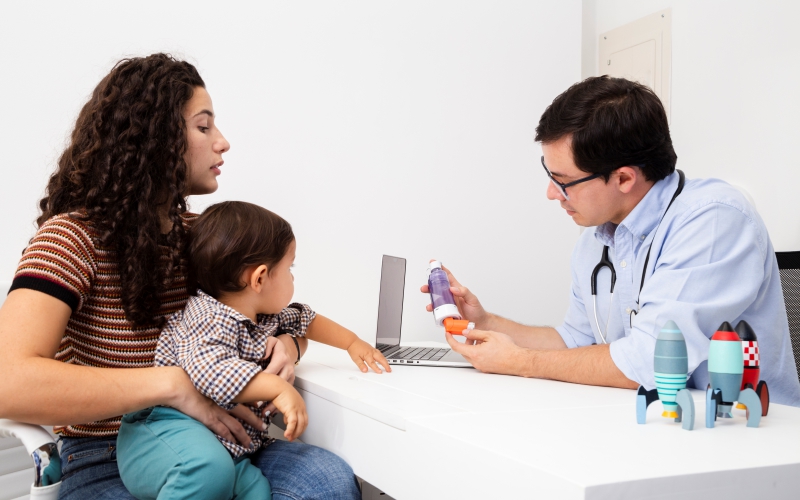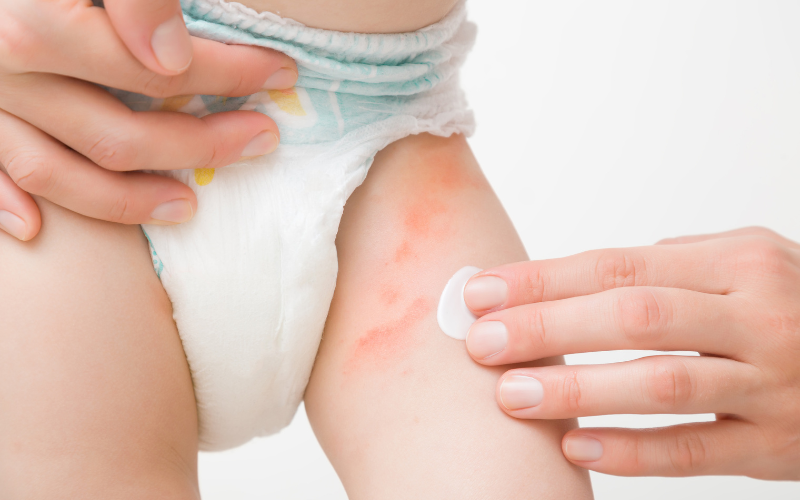Author: Dr.Amit Gupta MBBS, MD, KGMC, PGPN
Consultant: Paediatrician & Neonatologist Motherhood Hospital, Noida
As parents, it is natural to be concerned about our child’s development and whether they are meeting their milestones on time. Tracking your child’s developmental progress is an essential part of ensuring their growth and well-being. In this blog, Dr. Amit Gupta, a Senior Consultant at Motherhood Hospital, shares valuable insights on how you can assess and monitor your child’s developmental milestones.
Understanding Developmental Milestones
Developmental milestones are a set of skills and abilities that children acquire as they grow. These milestones can be categorized into different domains, including physical, cognitive, language, social, and emotional development. It is important to remember that each child develops at their own pace, but tracking their progress can help identify any potential delays or concerns.
Familiarize Yourself with Typical Milestones
Dr. Amit Gupta advises parents to familiarize themselves with the typical developmental milestones for their child’s age range. While every child develops differently, understanding the general expectations can help you identify any potential concerns. Milestones can include rolling over, sitting up, crawling, walking, speaking their first words, and more.
Observe and Interact with Your Child
One of the best ways to monitor your child’s developmental milestones is through observation and interactions such as –
• Engage in meaningful playtime with your child. Encourage activities that promote physical, cognitive, and social development.
• Pay attention to your child’s responses, including eye contact, smiles, babbling, and attempts to communicate.
• Notice how your child moves and explores their environment. Are they reaching for objects, grasping toys, or attempting to crawl or walk?
• Monitor their interactions with others, such as siblings or peers. Do they engage in reciprocal play and demonstrate basic social skills?
• Keep Track of Milestones.
Keeping Track of Developmental Millstones
Maintaining a developmental milestone tracker can help you monitor your child’s progress effectively. Such as:
• Create a simple chart or use a milestone tracking app to record your child’s achievements.
• Note the date when your child reaches each milestone, and any observations or concerns you may have.
• Refer to reputable sources, such as the American Academy of Pediatrics or World Health Organization, for guidance on typical milestones for different ages.
• Communicate with Healthcare Professionals
• Regular communication with healthcare professionals is crucial in assessing your child’s development.
• Attend scheduled well-child visits, where healthcare providers will evaluate your child’s growth and development.
• Share any concerns or observations with your pediatrician or healthcare professional during these visits.
• Be open and honest about your child’s development, as it helps professionals understand the full picture and provide appropriate guidance or referrals if needed.
Trust Your Parental Instincts
As a parent, you know your child best. Dr. Amit Gupta emphasizes the significance of trusting your instincts. If you notice significant delays or regressions in your child’s development, seek professional advice and guidance promptly. Early intervention is key in addressing developmental concerns, so trust your instincts and consult a healthcare professional if you have any worries.
Conclusion
Monitoring your child’s developmental milestones is an essential aspect of parenting. Dr. Amit Gupta advises parents to familiarize themselves with typical milestones, engage in observation and interaction, maintain a milestone tracker, communicate with healthcare professionals, and trust their parental instincts. By actively monitoring your child’s development, you can identify any potential delays or concerns and seek appropriate support if needed. Remember, each child is unique, and developmental timelines may vary, but early detection and intervention can make a significant difference in their overall well-being and future success.
At Motherhood Hospitals, we have a team of experienced super specialists backed by the latest in infrastructure and facilities. We have the best Paediatricians in Noida that consists of a team of paediatric specialists that cater to all the needs of children, across age groups, and provide the best care for your child’s development.
Do take an appointment with the best child care hospital in Noida at a centre closest to you. Meet with our doctors who will carry out the required investigations, diagnose the issue and recommend the most appropriate treatment, enabling you to lead an active life.
If you wish to get in touch with Dr. Amit Gupta, please book your appointment here.


 Toll Free Number
Toll Free Number





















